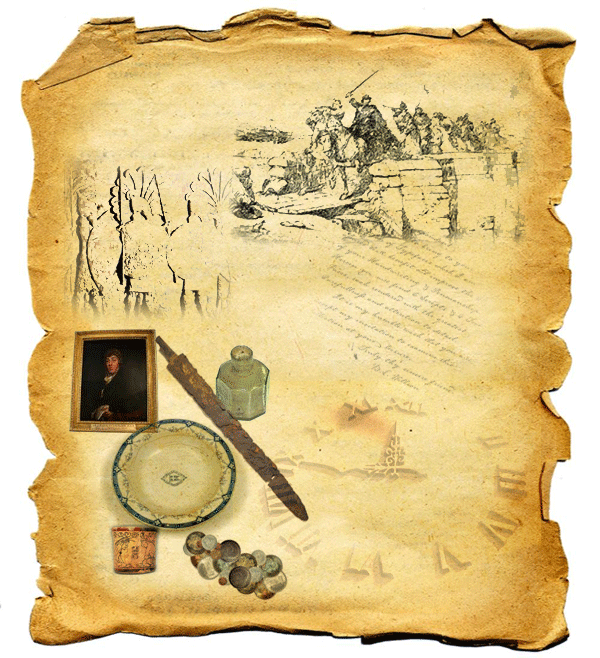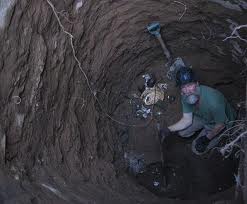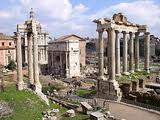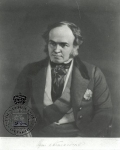- Latest Archaeology Updates
- Importance and applicability
- Famous Archaeologists
- Museums Collections
- Site Map
- World Heritage Sites
- World History Monuments
- Archaeological Organizations
- World Atlas of Archaeology
- Forensic Investigation and Geophysics
- Contact Us
- Movies based on Archaeology
- Frequently Asked Questions
- Archaeological discoveries
- Tell a Friend
- Archaeological Abbreviations
- Gallery Collections
- Famous-Museums site map
- Famous-archaeologists site map
- Archaeological Monuments site map
Urban archaeology is a sub discipline of archaeology specialising in the material past of towns and cities where long-term human habitation has often left a rich record of the past.Humans produce waste. Large concentrations of humans produce large concentrations of waste. Faeces, kitchen waste, broken objects etc. all need to be disposed of. Small numbers of people can dispose of their waste locally without encouraging vermin or endangering their health.
Once people began to live together in large numbers, around five thousand years ago, such methods began to become impractical. Material would be brought into the these new settlements but would rarely be taken out again.
Up until the nineteenth century when organised rubbish disposal became widespread in urban areas people invariably threw their waste from their windows or buried it in their gardens. If their houses fell down, a common enough occurrence when planning laws were non-existent, owners would pick out what they could reuse, stamp down the remains and rebuild on the old site.
The effect of this is that even a moderately sized settlement of any antiquity is built on top of a heap of refuse and demolished buildings and is therefore raised up from its original height on a plateau of archaeology. This is most apparent in the tel sites of the Near East where towns that have been occupied for thousands of years are raised up many metres above the surrounding landscape.
Archaeological excavation within historic cities therefore often produces a thick stratigraphy dating back to the original foundation and telling the story of its history. The City of London for example, sits on a tel which preserves a layer of dark material attributed to the burning of the city by Boudica in AD 60.
The dense stratigraphy of such cities posed problems for the archaeologists who first excavated them. Earlier excavations were generally limited to rural areas, or towns which had been long abandoned. Open area excavation was feasible as there was plenty of space and the archaeology could often be exposed just in plan. In working cities however, space for excavation is usually limited to the size of the open plot and one layer of archaeology needs to be excavated before the next one can be exposed.
Issues such as this had appeared before, at Pompeii or at multiphase rural sites but the move towards the investigation of cities, which began in Europe following the Second World War when bomb damage left areas open for investigation, meant that there was a necessity in finding a new method of excavating.
The resulting solution revolved around the method of single context recording. The practice involves drawing each feature individually in plan and then relating its position to the site grid rather than planning large areas at once. Each drawing is made on a square piece of translucent film representing a 25 square metre grid square. The site is excavated down to the first significant layer of archaeology and features excavated and recorded as normal but also planned as single contexts.
The site is then reduced to the next layer of archaeology and the process begins again. The excavation and recording can continue until natural deposits are reached. A small, deep trench known as a sondage is often excavated at first to provide a view of the entire stratigraphy at once and give an indication of the quantity of material to be excavated.
urban archaeology in Europe - Council of Europe - 1999.
Initially, four possible pilot activities were identified, one of which was to be concerned specifically with urban archaeology, "a comparative study of the situation in urban archaeology in the various countries, which could give rise ...
It's urban archaeology- Popular Mechanics - Vol. 149, No. 6.
Cadaver brought police raid My own initiation into amateur archaeology became a baptism of fire. ... NJ, one of earliest American industrial towns and hotbed of urban archaeology. umns of lines rather like those on an accountant's pad? ...
The contributors to this volume represent the most recent research in this exciting new field. This new archaeology gives a crucial understanding of the experience of modernity and the communities it continues to affect.
- Urban archaeology is a sub discipline of archaeology specialising in the material past of towns and cities where long-term human habitation has often left a rich record of the past..
- Urban Archaeology : The summer 2011 excavations extend a long-term program of public archaeology in Maryland's state capital that is supported by the Mayor and City Council of Annapolis.
- urbanarchaeology.org : A website for everyone interested in Local history, or history in general for that matter. We cover a wide range of topics now that the site has grown. Everything from Metal detecting, Gold panning, Treasure Hunting, Coin Collecting, Video Diary's and lots of how to stuff.
-
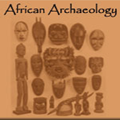 African Archaeology Africa has the longest record of human activity of any part of the world and along with its geographical extent; it contains an enormous archaeological resource. Scholars have studied Egyptology for centuries but archaeologists have only paid serious attention to the rest of the continent in more recent times.
African Archaeology Africa has the longest record of human activity of any part of the world and along with its geographical extent; it contains an enormous archaeological resource. Scholars have studied Egyptology for centuries but archaeologists have only paid serious attention to the rest of the continent in more recent times. -
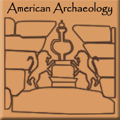 American Archaeology Archaeology of the Americas is the learning of the archaeology of North America, Central America (or Mesoamerica), South America and the Caribbean, which is to say, the pre-history and Pre-Columbian history of Native American peoples.
American Archaeology Archaeology of the Americas is the learning of the archaeology of North America, Central America (or Mesoamerica), South America and the Caribbean, which is to say, the pre-history and Pre-Columbian history of Native American peoples. -
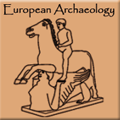 European Archaeology In terms of area, Europe is the world's second smallest continent, with an area of 10,400,000 kmē (4,000,000 square miles), making it slightly larger than Australia.
European Archaeology In terms of area, Europe is the world's second smallest continent, with an area of 10,400,000 kmē (4,000,000 square miles), making it slightly larger than Australia. -
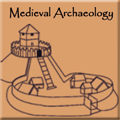 Medival archaeology The period covers the commotion caused by the fall of the Medival archaeology Roman Empire and cultures such as the Vikings, Saxons and Franks.
Medival archaeology The period covers the commotion caused by the fall of the Medival archaeology Roman Empire and cultures such as the Vikings, Saxons and Franks. -
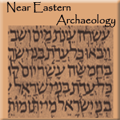 Near Eastern Archaeology Near Eastern Archaeology is a wide generalised application, and is divided into further regional sub-branches, the archaeology of modern states in the region or along broad thematic lines.
Near Eastern Archaeology Near Eastern Archaeology is a wide generalised application, and is divided into further regional sub-branches, the archaeology of modern states in the region or along broad thematic lines. -
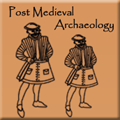 Post Medieval Archaeology The Post Medieval Archaeology is considered as a bi-annual journal study of the material evidence of European society. This period saw the conversion of medieval to industrial society.
Post Medieval Archaeology The Post Medieval Archaeology is considered as a bi-annual journal study of the material evidence of European society. This period saw the conversion of medieval to industrial society. -
 Modern Archaeology In contrast to the antiquarianism of classical archaeology, anthropological archaeology today is concerned with culture history (i.e., the chronology of events and cultural traditions) and the explanation of cultural processes.
Modern Archaeology In contrast to the antiquarianism of classical archaeology, anthropological archaeology today is concerned with culture history (i.e., the chronology of events and cultural traditions) and the explanation of cultural processes.

